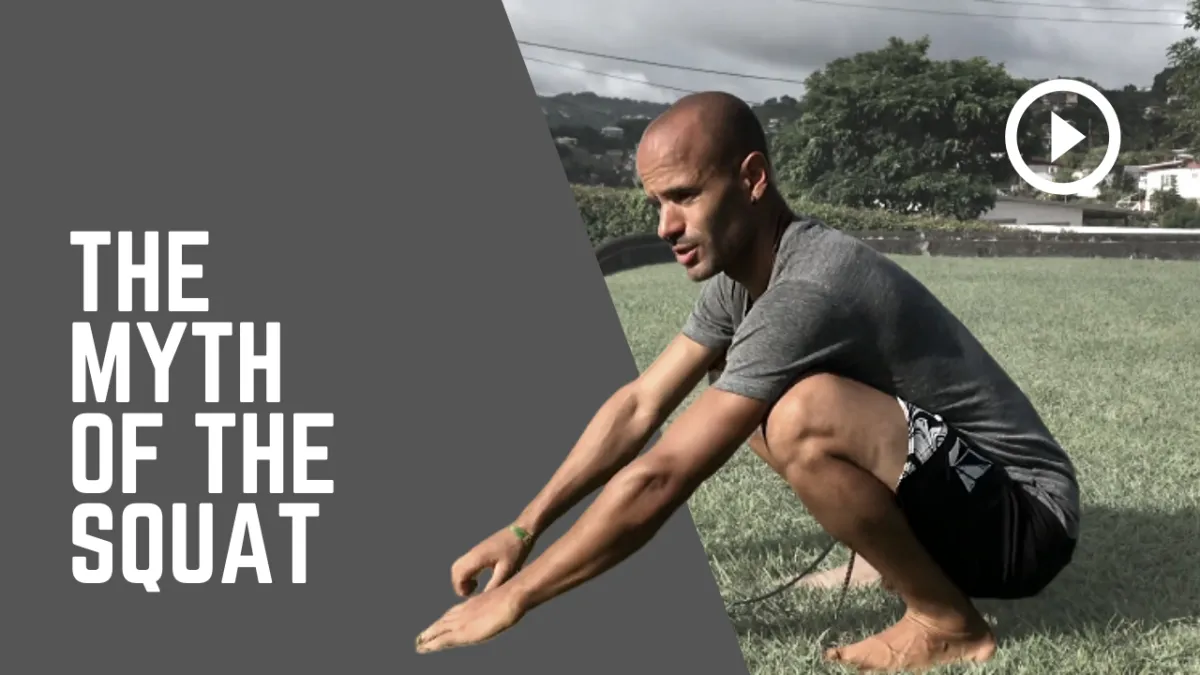
Should My Knees Go Passed My Toes When Squatting?
Subscribe To Our YouTube Channel Here →
Use It Or Lose It
People say you shouldn’t squat if you have knee pain. Well, maybe you have the knee pain because you haven’t been squatting. Our knees and hips are made for squatting. If you don’t use it, you lose it.
A Resting Position
The squat is one of the human body’s resting position. Think about it - the squat is supposed to be for rest/sitting, elimination (i.e. going to the bathroom), and childbirth. It is essential for the knee to go passed the toe line in order to squat properly.
Should I Squat if I Have Knee Pain?
People say you shouldn’t squat if you have knee pain. Well, maybe you have the knee pain because you haven’t been squatting. Our knees and hips are made for squatting. But use common sense - to start re-using it, your approach should be gradual, instead of suddenly trying to force yourself into that position by using external weight/load.
In most if not all cases of people preaching about the dangers of letting the knee go passed the toe line, they’ve either suffered a knee injury themselves or work with people who have knee problems and can’t squat. All you need to do is use common sense. Is it smart to go from literally never squatting for years to trying to force yourself into that position? No.
How Do I Squat Properly
It is essential for your knee to go passed your toe when you squat. That is how your body is designed. The squat is one of the human body’s resting position. Think about it - the squat is supposed to be for rest/sitting, elimination (i.e. going to the bathroom), and childbirth. It is essential for the knee to go passed the toe line in order to squat properly. In most (if not all) cases of people preaching about the dangers of letting the knee go passed the toe line, they cannot demonstrate a proper, natural, full-depth squat.
You need to gradually re-introduce that position to your body. If you want help on regaining your squat, check out our LEGS program. Included in the program is the Squat Rehab Protocol, which will help you restore your full resting squat, no matter what point you’re starting from.
Get rid of rules around squatting, and stop saying you should or shouldn’t do this. Once you know what the position is (picture a baby resting in a squat), just aim for that. So obviously, if you lack the ability to compress in your hips and knees, and your ankle mobility is non-existent, it’s going to be hard for you to achieve that position.
Here are three guidelines to know about the squat. Firstly, your weight should be balanced over the midfoot the entire time. It’s common to see people go forward onto the toes when trying to squat. This is something that will aggravate the knees, among other things. Secondly, your knees shouldn’t feel like they are caving inward. Lastly, keep your heels on the ground for the entire squat.
At the end of the day, the squat should be the most natural position for anyone to get into. People say you shouldn’t squat if you have knee pain. Well, maybe you have the knee pain because you haven’t been squatting. Our knees and hips are made for squatting. If you don’t use it, you lose it.



Copyright © 2019-2025 Athletic Engineering Canada. All rights reserved.
